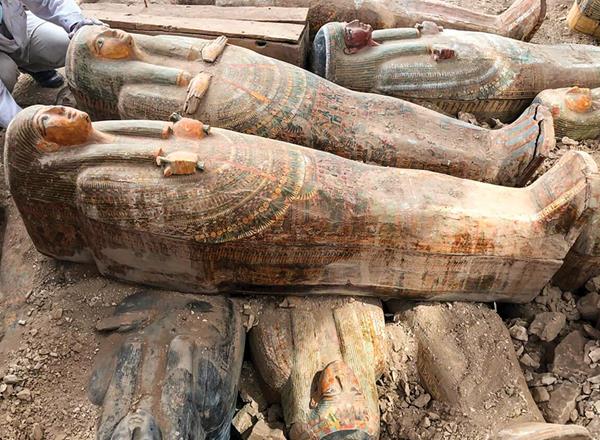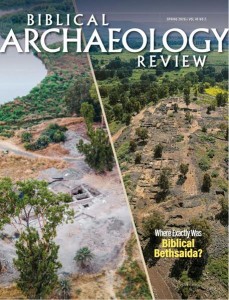
A chance discovery of vividly painted Egyptian coffins has been made in al-‘Asasif, a part of the Theban necropolis across the Nile from modern Luxor. While excavating Theban Tomb (TT) 28 last October, archaeologists stumbled upon an underground cache of 30 human coffins. Stacked in two layers just a few feet under the surface, these reportedly belong to the Theban priesthood from Dynasty 22 (c. 945–712 B.C.E.), which began with Sheshonq I (Shishak), who according to the Bible plundered Jerusalem in Year 5 of King Rehoboam’s reign (1 Kings 14:25-26).
Intact and containing wrapped mummies, most of these wooden coffins are covered (outside and inside) with colorful hieroglyphic inscriptions and figural scenes depicting the deceased worshipping various deities and deified kings. The religious texts and depictions provide access to ancient beliefs and rituals, and the titles and biographic data of the deceased advance our knowledge of the late tenth century B.C.E. Because they were stored so as to be safe from humidity, the bodily remains are very well preserved and can reveal much about the diet, health, and genetics of the deceased.
Although spectacular, this cache is not unique in the Theban necropolis. In 1881, more than 50 royal mummies of Dynasties 17–21 were found in a tomb hewn into the cliff above the terraced Temple of Hatshepsut at Deir al-Bahri. Labeled TT320, this tomb is known as the Royal Cache. Only ten years later, 153 burial assemblages belonging to the priests of Amun from Dynasty 21 were discovered in Bab al-Gasus—an underground collective tomb next to the Hatshepsut temple. And in 1898, the tomb of Amenhotep II (KV35) was unearthed in the Valley of the Kings. Besides its original owner, it contained more royal individuals from the New Kingdom, including Amenhotep III and Tiye—the parents of Akhenaten and grandparents of Tutankhamun.
Like the 1881 and 1898 finds, the al-‘Asasif coffins are a secondary assemblage created already in antiquity. In times of unrest and widespread looting, such burials were removed from their own tombs and stashed in a more secure location to prevent disturbance by the hands of tomb robbers. Following their modern discovery, coffins are typically opened, and the bodies are unwrapped, stripped of their grave goods, and showcased around the globe.
The al-‘Asasif find is already said to be bound for the soon-to-open Grand Egyptian Museum, where it will be studied and put on display.

